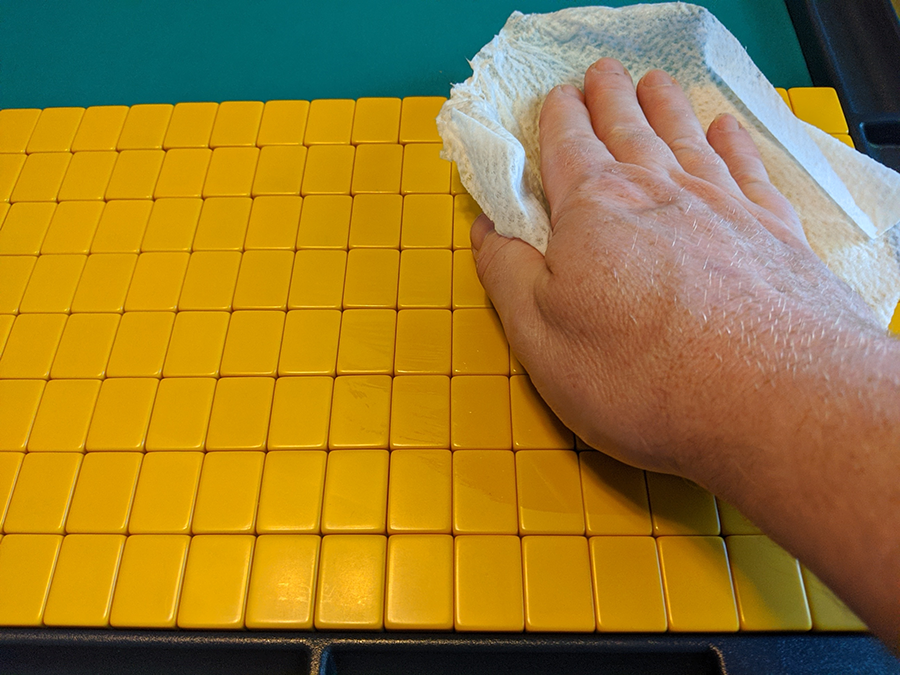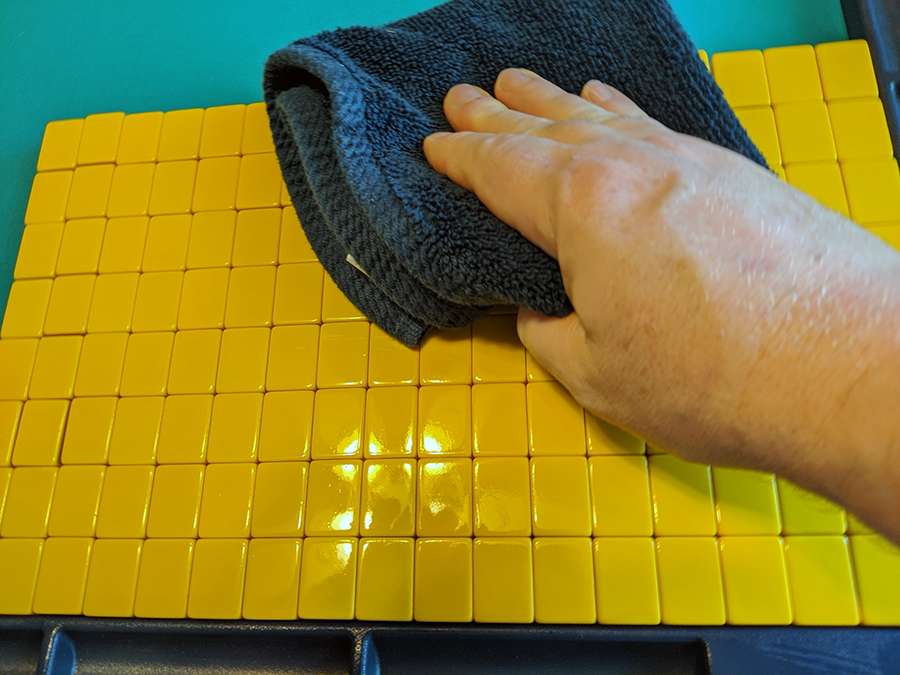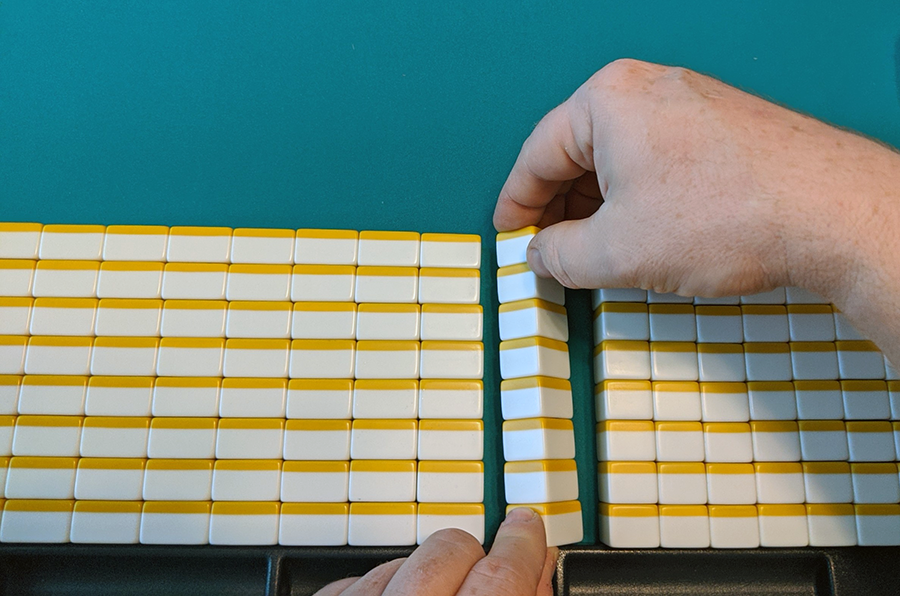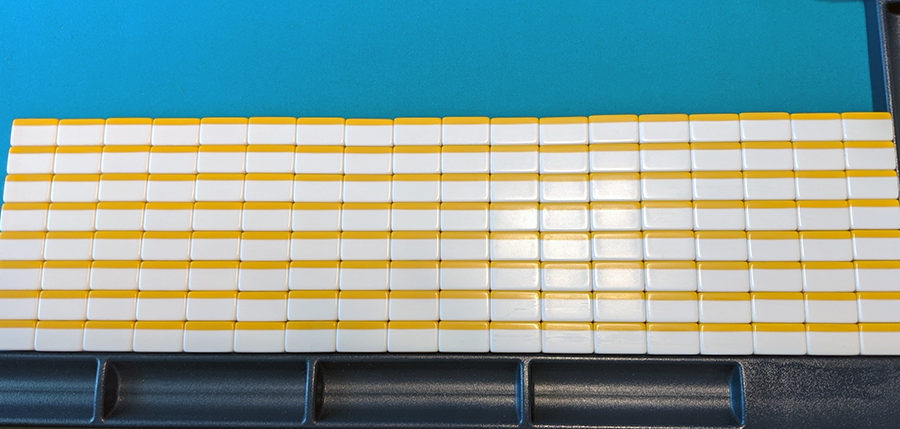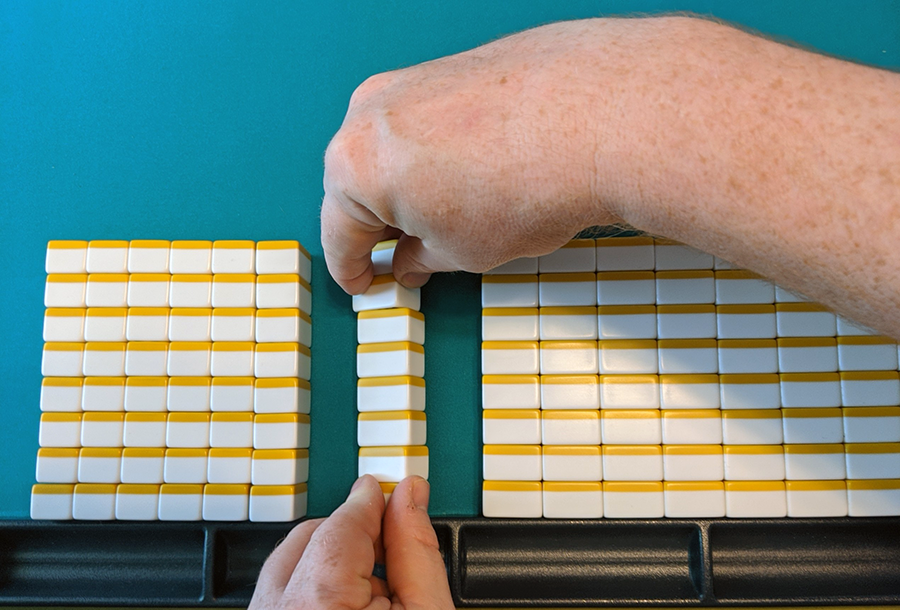Cleaning your mahjong tiles
Cleaning your mahjong tiles should be a regular part of the care and keeping of your set(s). It keeps grime from building up, and you get a chance to inspect for any damage, cracks, or wear.
More importantly we are talking about sanitation. Regularly disinfecting tiles helps assure germs aren’t being passed between players at the table; it is just good hygiene for everyone involved. This is doubly important for clubs, where many hands may handle a set of tiles in a single day. So, after you have cleaned up your junk mats, address those tiles.
While sanitizing your tiles is important, this is not a substitute for proper social distancing during this time of global infection. Stay at home and avoid gatherings if local mandates and good sense require it.
First, A Few Don’ts
Avoid exposing your tiles to heat, harsh chemicals, abrasives, or any process that will “tumble” your tiles together. Any of these will cause undue wear on your tiles.
- Don’t wash your tiles in an automatic dishwasher
- Don’t dump them in a bucket
- Don’t scrub the tiles with stiff brushes or pads
- Use any kind of cleanser with solvent that may strip the paint from the faces of your tiles
Supplies
You’re going to need a cleanser and a soft cloth to apply it with. It’s pretty straight-forward, but how you got about it depends on what you’re using. Baby wipes are often suggested, which are soft and great for a quick clean but don’t usually have a disinfectant. Disposable disinfecting surface wipes are a good alternative as well. A small bowl of rubbing alcohol and a soft hand cloth work as well. Don’t use paper towels for this as they will fall apart and make a mess quickly.
A soft toothbrush and some warm water will be good if you need to clean out recesses. You’re also going to need something to dry the tiles with as you go so the surfaces don’t stick together. Paper towels are okay here, or a second soft cloth.
Setting Up
Lay the tile set out in even rows on your table or mat so they are squarely pressed together. I like to start with the tiles face down but that is truly up to you. Against the frame for a junk mat or mahjong table is ideal so you have an edge to hold the block against as you clean.
Riichi sets usually have a total of 144 tiles (136 used in play, plus four red-fives and the four flowers). 9 even rows should work fine, or 8 if you only have the 136 tiles.
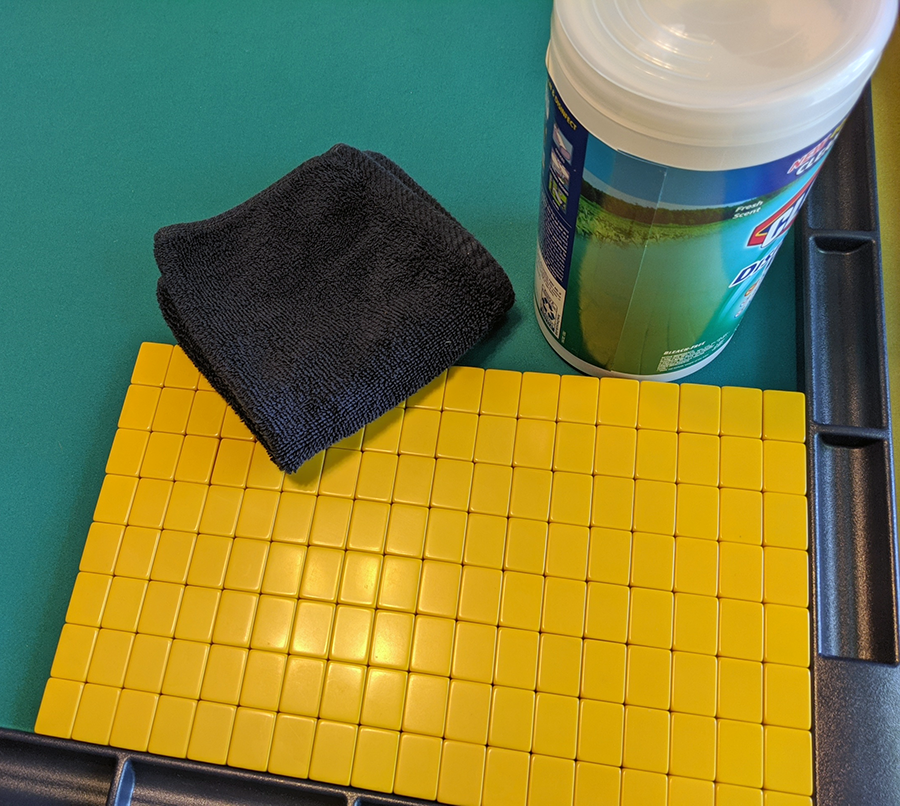
Cleaning
Using the damp cloth (not too wet if you can avoid it) wipe down the face-up surface of the tiles in broad strokes making sure to touch every tile. Look for damaged tiles or any spot that looks dirty. Spot clean those as necessary. If they are heavily soiled, such as avacado dip in the tile faces, dip the toothbrush in warm water and gently scrub it out.
Follow up with the dry cloth to remove any excess—this will remove any buildup and stops the smooth tile surfaces from sticking together as you roll them over.
Repeat these two steps as you clean each surface in turn as you continue below.
Flipping/Rolling Tiles
Next, stand each row up on end in turn and then pull them into a block again. I prefer to move the entire block of tiles away from me and start with the “front” row, pulling it against the rail after turning it up. This avoids the need to “sweep” all the tiles to the rail after they are all done—it’s messy.
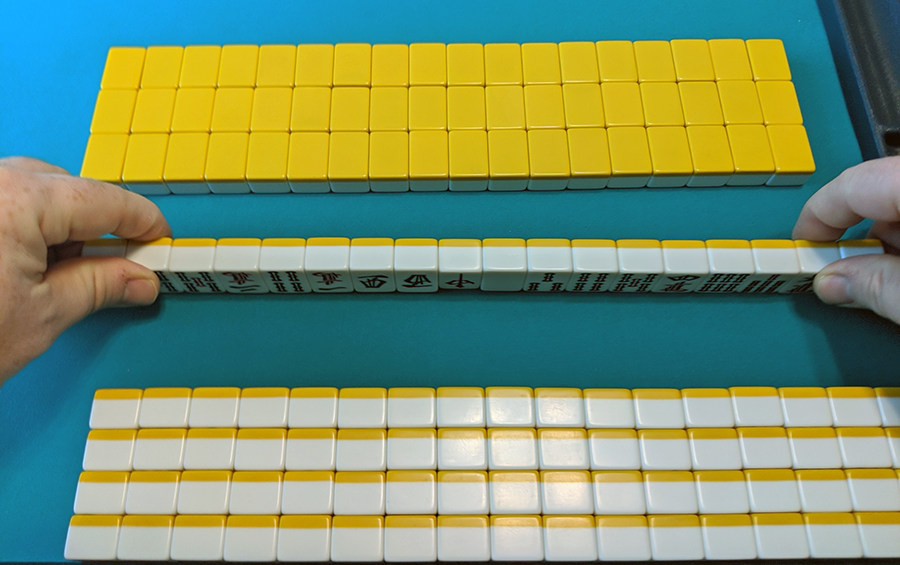
Roll each column of tiles on its side and pull together. Repeat twice more, cleaning each of the four edges of each tile as you go.
After the last edge is done, you will need to roll the tiles once more so they are standing on a short side, and then lay each row flat. This should put you on the opposite face that you started with.
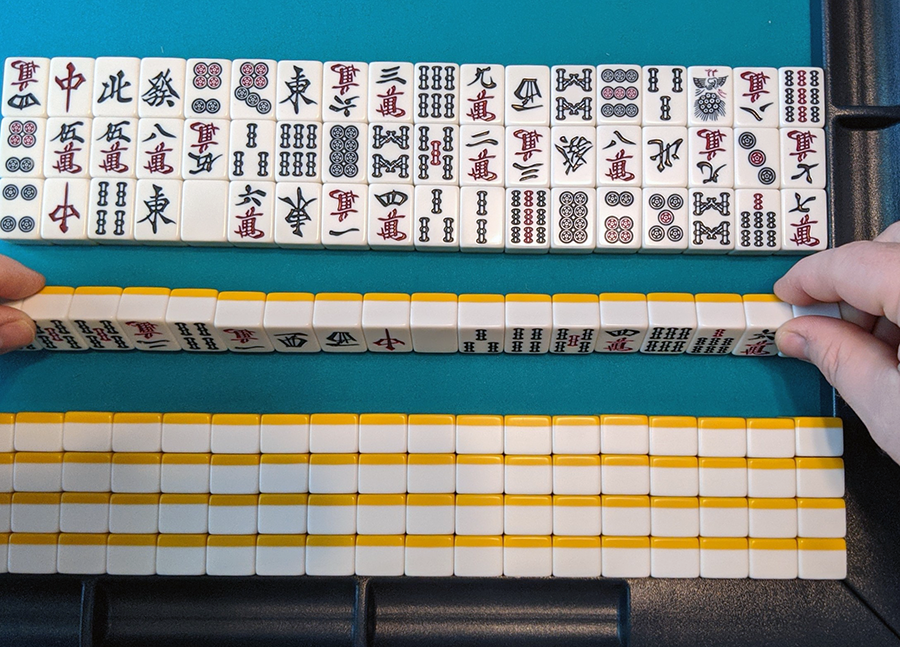
Give this face one last pass with the cleaner and dry towel. Congratulations and thank you for cleaning your mahjong tiles! You have done yourself and your friends a great service! Cleaning your tiles regularly will keep your tiles looking nice, sanitize them between sessions, and extend their service life before needing replacement.

